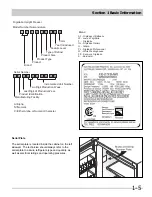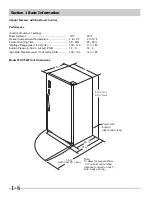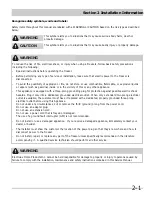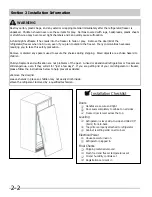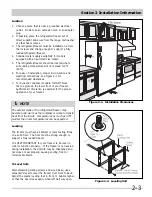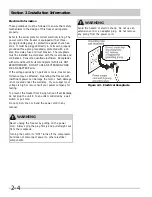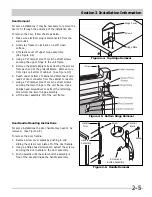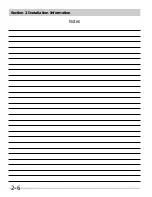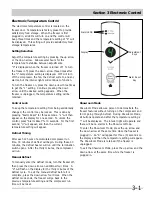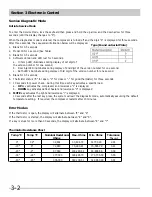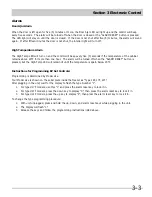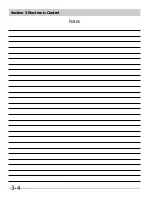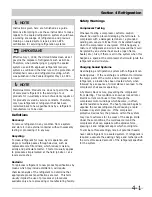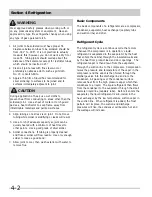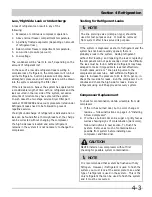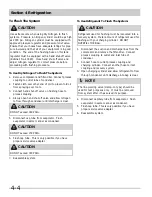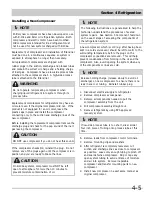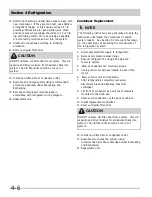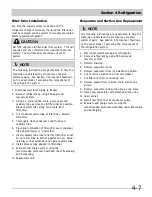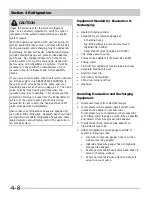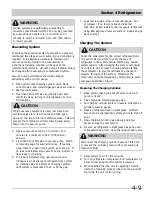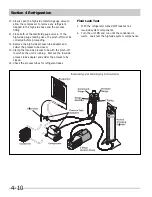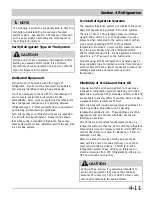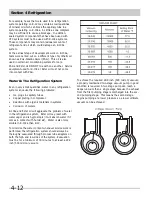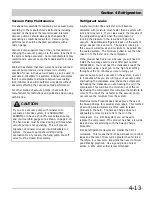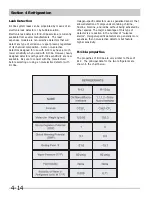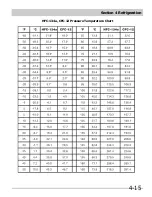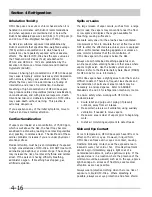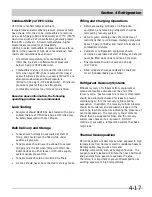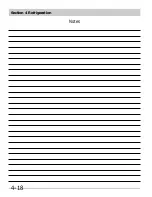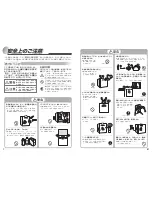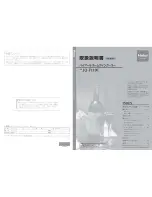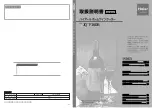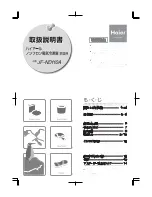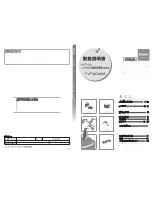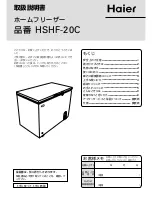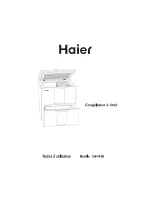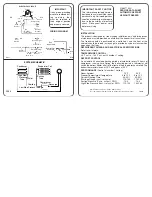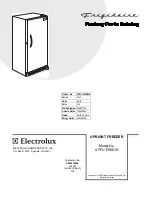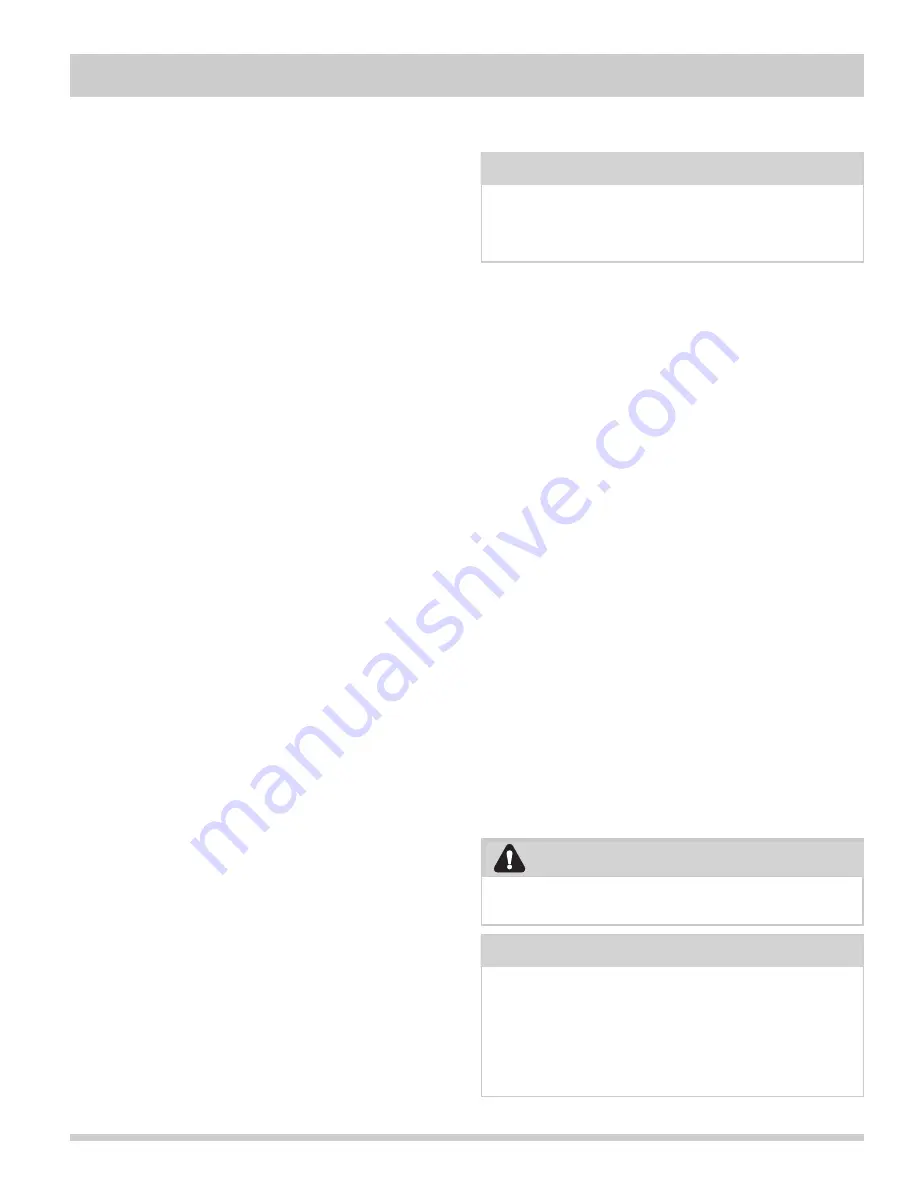
Section 4 Refrigeration
4-3
Low/High Side Leak or Undercharge
A loss of refrigerant can result in any of the
following:
1. Excessive or continuous compressor operation.
2. Above normal freezer compartment temperature.
3. A partially frosted evaporator (depending on amount
of refrigerant loss).
4. Below normal freezer compartment temperature.
5. Low suction pressure (vacuum).
6. Low wattage.
The condenser will be “warm to cool”, depending on the
amount of refrigerant lost.
In the case of a low side refrigerant leak resulting in
complete loss of refrigerant, the compressor will run but
will not refrigerate. Suction pressure will drop below
atmospheric pressure and air and moisture will be drawn
into the system saturating the filter drier.
If there is reason to believe the system has operated for
a considerable length of time with no refrigerant and the
leak occurred in the low side of the system, excessive
amounts of moisture may have entered the system.
In such cases the two stage service Dryer Filter part
number 5303918288 and vacuum procedure listed under
Refrigerant Leaks need to be followed to prevent
repetitive service.
If a slight undercharge of refrigerant is indicated and no
leak can be found after a thorough leak test, the charge
can be corrected without changing the compressor.
If a high side leak is located and some refrigerant
remains in the system it is not necessary to change the
compressor.
Testing for Refrigerant Leaks
If the system is diagnosed as short of refrigerant and the
system has not been recently opened, there is
probably a leak in the system. Adding refrigerant
without first locating and repairing the leak or replacing
the component will not permanently correct the difficulty.
The leak must be found. Sufficient refrigerant may have
escaped to make it impossible to leak test effectively.
In such cases, add a ¼” line piercing valve to the
compressor process tube. Add sufficient refrigerant
vapor to increase the pressure to 40 to 50 lb. per sq. in.
Check the low side for leaks. Run the compressor 2 or 3
minutes and check the high side for leaks. Recover
refrigerant using an EPA approved recovery system.
Compressor Replacement
To check for contamination, obtain oil sample from old
compressor.
1. If the oil has burned odor, but no color change or
residue — follow instructions on page 4-6 “Installing
A New Compressor”.
2. If oil has a burned odor and a sugar or gritty feel as
well as showing signs of contamination (dark color),
follow instructions in next section, To Flush The
System. Remove as much of contamination as
possible from system before installing new
compressor and filter-drier.
NEVER install a new compressor without first
checking for possible system contamination.
CAUTION
The line piercing valve (clamp-on type) should be
used for test purposes only. It must be removed
from system after it has served its purpose.
NOTE
It is recommended that system be flushed with dry
Nitrogen. However, if refrigerant is used to flush the
system you must look at the serial plate to see what
type of refrigerant is used in the system. This is the
only refrigerant that can be used to flush the system
and it must be recovered.
NOTE
Содержание FFH17F8HW0
Страница 2: ......
Страница 14: ...Section 2 Installation Information 2 6 Notes ...
Страница 18: ...Section 3 Electronic Control 3 4 Notes ...
Страница 33: ...Section 4 Refrigeration 4 15 HFC 134a CFC 12 Pressure Temperature Chart ...
Страница 36: ...Section 4 Refrigeration 4 18 Notes ...
Страница 48: ...Section 5 Component Teardown 5 12 Notes ...
Страница 53: ...Section 7 Wiring Diagram 7 1 ...
Страница 54: ...Section 7 Wiring Diagram 7 2 Notes ...

